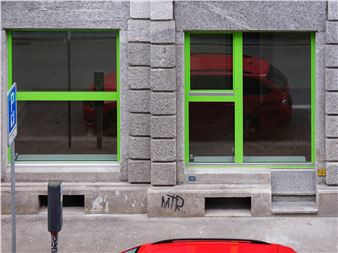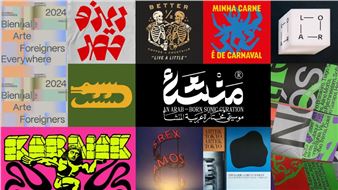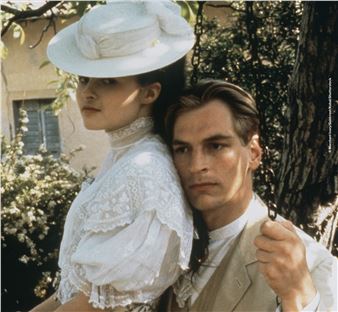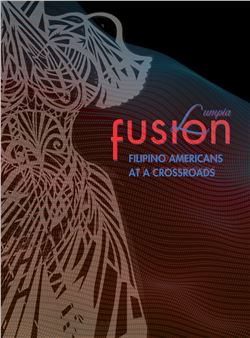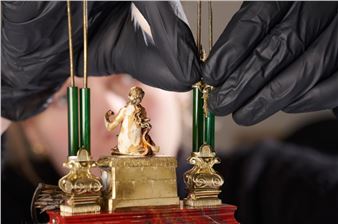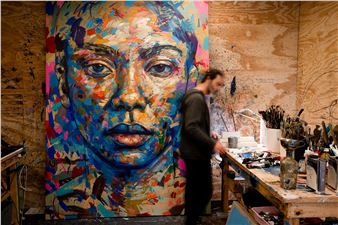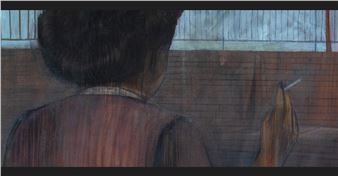John Phalane: Sefapi
John Phalane’s richly textured drawings operate in multiple and shifting dimensions. Flat, squared representations of urban and residential districts, that cue the visual language of street maps, are upended by blue horizons. Here, traffic lights bend to your gaze, their limited spectrum submitting wholeheartedly. If you drive south along Hans van Rensburg Street in Central Polokwane, you will pass Grobler Street, the Nedbank Headquarters, Thabo Mbeki Street, and enter cerulean abyss. The rooms on the western side of Sun City’s ziggurat spill over its unreliable edge and are committed to the mountain. Buildings squeeze into one another, competing for space before the checkerboard shoreline of Rio de Janeiro. You may look down (from above) at the Hartbeespoort Dam and also (from the side) at the tiered gradient of surrounding mountains. This tiered gradient is a dimension in itself, a layer cake of brown and green, in which the artist’s sure hand and long hours are embedded. These distortions are generous. They loosen the limits of perspective while providing sufficient evidence of its systems to reassure you that this is a place you’ve been to, driven past, flown over. As such, the drawings tap into processes of remembering and recounting, the ways in which our personal memory or image of a place is transformed when we describe it to others.
Unpopulated, like most maps, Phalane’s work invites projection from its audience. My brother lives there. That’s where I work. I always get stuck at that intersection. That’s the Beacon Isle Hotel. But is it? It’s true that every street is either brightly signposted in colour pencil or labelled in ballpoint pen, and that these names are drawn directly from Phalane’s recollections of being on the road. But the chequered expanses, fluid dimensions and vibrant palette of the drawings pull these known worlds in and out of a far more subjective space.
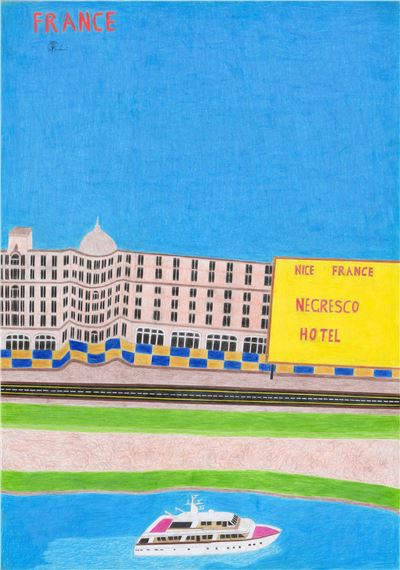
Recommended for you
John Phalane’s richly textured drawings operate in multiple and shifting dimensions. Flat, squared representations of urban and residential districts, that cue the visual language of street maps, are upended by blue horizons. Here, traffic lights bend to your gaze, their limited spectrum submitting wholeheartedly. If you drive south along Hans van Rensburg Street in Central Polokwane, you will pass Grobler Street, the Nedbank Headquarters, Thabo Mbeki Street, and enter cerulean abyss. The rooms on the western side of Sun City’s ziggurat spill over its unreliable edge and are committed to the mountain. Buildings squeeze into one another, competing for space before the checkerboard shoreline of Rio de Janeiro. You may look down (from above) at the Hartbeespoort Dam and also (from the side) at the tiered gradient of surrounding mountains. This tiered gradient is a dimension in itself, a layer cake of brown and green, in which the artist’s sure hand and long hours are embedded. These distortions are generous. They loosen the limits of perspective while providing sufficient evidence of its systems to reassure you that this is a place you’ve been to, driven past, flown over. As such, the drawings tap into processes of remembering and recounting, the ways in which our personal memory or image of a place is transformed when we describe it to others.
Unpopulated, like most maps, Phalane’s work invites projection from its audience. My brother lives there. That’s where I work. I always get stuck at that intersection. That’s the Beacon Isle Hotel. But is it? It’s true that every street is either brightly signposted in colour pencil or labelled in ballpoint pen, and that these names are drawn directly from Phalane’s recollections of being on the road. But the chequered expanses, fluid dimensions and vibrant palette of the drawings pull these known worlds in and out of a far more subjective space.

 ARTISTS
ARTISTS







